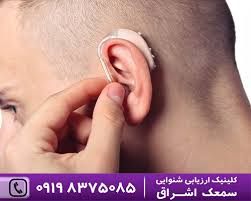
In 1987, the first commercially available digital خرید سمعک aid was introduced. Digital signal processing allowed for more precise sound amplification and filtering, significantly improving sound quality and the ability to customize hearing aids to individual needs. Features such as noise reduction, feedback cancellation, and directional microphones became standard, greatly enhancing the listening experience.
Modern Innovations
Today, hearing aids are highly sophisticated devices that offer a wide range of features. Bluetooth connectivity allows users to stream audio directly from their smartphones, televisions, and other devices. Rechargeable batteries have become more common, eliminating the need for frequent battery changes. Advanced algorithms enable real-time sound processing and adaptation to different listening environments. Additionally, modern hearing aids are designed to be nearly invisible, with in-the-ear (ITE) and completely-in-canal (CIC) models offering discreet options for users.
The Impact of Hearing Aids on Quality of Life
Hearing aids have a profound impact on the quality of life for individuals with hearing loss. Improved hearing ability enhances communication, reduces social isolation, and can even improve cognitive function. Studies have shown that untreated hearing loss is linked to cognitive decline and dementia, making the use of hearing aids an important factor in overall health and well-being.
Future Directions
The future of hearing aids looks promising with ongoing advancements in artificial intelligence (AI) and machine learning. These technologies have the potential to further personalize hearing aid settings and improve the user’s listening experience. Research is also being conducted on integrating hearing aids with other health monitoring devices, providing users with a comprehensive health management tool.
Conclusion
The journey of hearing aids from rudimentary ear trumpets to advanced digital devices underscores the incredible progress in audiological technology. As hearing aids continue to evolve, they will undoubtedly play an increasingly important role in enhancing the lives of those with hearing impairments, helping them to connect, communicate, and thrive in an ever-changing world.